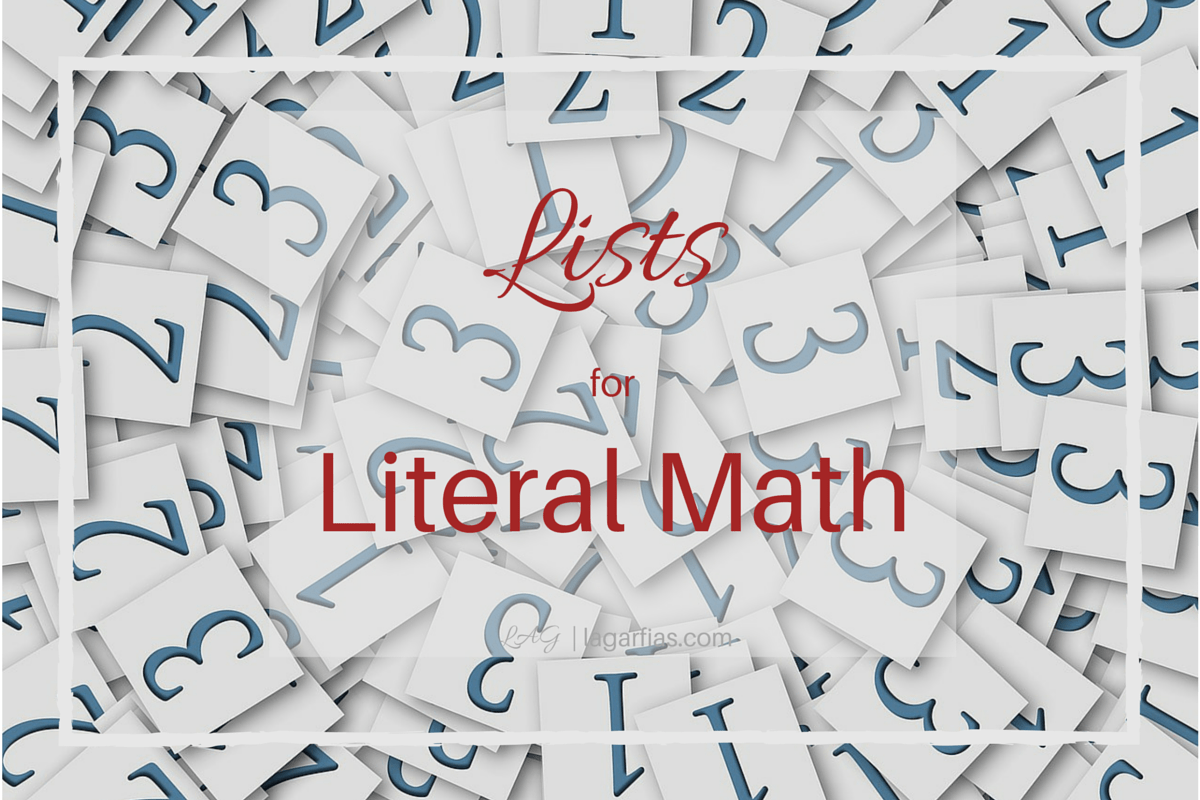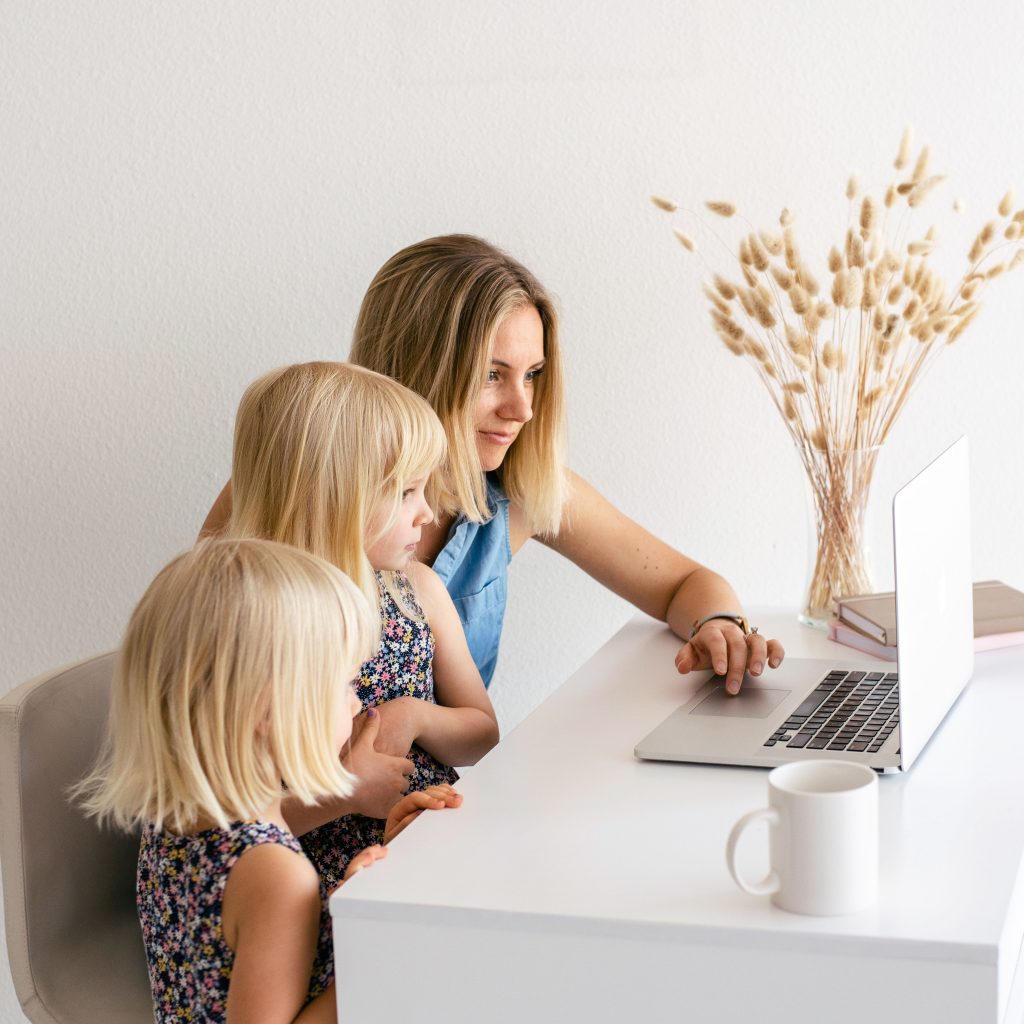
In my article yesterday from Home School Enrichment, “Literal Math for Little Minds,” the follow-up to the previous “Too Young for Math?: The How and Why of Early Math Education,” I discuss in greater detail the necessity of literal math for young children.
The key for the home educator is to lay aside the workbooks and teach young ones the reality of math principles in their own environment.
 From my archives, here is a sample list of suggestions to get you started thinking “outside the workbook.” This is not intended to be an exhaustive list of must-do’s or an assignment list for well-trained mathematicians. But perhaps the list will get you started playing with math in your house, too!
From my archives, here is a sample list of suggestions to get you started thinking “outside the workbook.” This is not intended to be an exhaustive list of must-do’s or an assignment list for well-trained mathematicians. But perhaps the list will get you started playing with math in your house, too!
~ Point out shapes in household objects (circle plates, rectangle tables, etc.). Draw items based on similar shapes.
~ Count how many shoes are in the house, lining them up single file. Then, place them in pairs and count them by twos. Finally, put them all away in their proper room, and count them in each room.
~ Skip count up and down the side-walk. Count with your child by single digits for toddlers; older children can count by 2’s, 5’s, 7’s, 4’s … any number!
~ Read the calendar regularly, counting how many days remain until a special event. Point out the month, the day of the week, and the date.
~ Point to the clock (a “real clock” with hands and a face) and announce the time to the nearest hour before every meal for a week. The next week, ask the youngest member of the family to tell the time for each meal. Soon, use the words “midnight” and “noon” and “am” and “pm” in your time-telling.
~ Count how many canned goods are in the pantry. Sort them by picture; count how many of each kind are sorted. Create a physical graph by stacking the cans on the kitchen floor to compare the quantities.
~ Place a pile of raisins in front of a toddler. Count them. Allow him to eat only one. Guess how many are left. Count them again. Repeat until everyone is full of raisins.
~ Spend an entire morning baking a batch of cookies. Allow the preschooler to measure each quantity himself, discovering which measurements are “more” and which are “less.” Repeat often, with different recipes, so the child becomes familiar with the differences between a unit, a half unit, and a quarter unit.
~ At lunch time, cut out the sandwiches in front of the child. Briefly discuss the difference between a whole sandwich (big brother’s sandwich), a half sandwich (his), and a quarter sandwich (the baby’s).
~ Play board games which involve rolling a die. Patiently allow even the youngest players to learn to count how many dots are on the die and how many spaces their counter must move.
~ Sing counting songs like “Ten Little Indians.”
~ Allow preschoolers to pick “six oranges” or “three tomatoes” at the grocery store.
~ Give allowance in change, and make them count it out to you.
~ Take the children to the bank.
~ Take the children to the dollar store, and let them pay with their change allowance for their own purchases, remembering to calculate tax.
~ Buy lots of rulers at the Dollar Store. Allow your child to measure everything to his heart’s content. Familiarize him with both inches and centimeters.
~ While standing in line, announce loudly, “We are Fourth in line!” Then, when the line moves, announce, “See? Now we are Third in line!” Continue moving down the ordinal positions until “We are First in line!” Your child will be pleased, and the checker is sure to hurry the line along.
~ Count horses in a field, really fast, while driving down the highway.
~ Older children can calculate how fast Mom is driving by noting how long it takes to pass a mile marker on the highway.
~ Wonder aloud math problems you don’t know (like “I wonder what how fast that shooting star falls and how a scientist would calculate it?”) and muse aloud possible answers. Let your children hear you theorize.
~ Count how long you can juggle, hold your breath, stand on your head … any contest!
~ Teach your 5- or 6-year-old to keep score for the family game time by keeping tally marks.
~ Play dominoes.


Wonderful ideas! Retweeting your link. Tried to click on your facebook link on your sidebar but it doesn’t seem to be working.
Thanks for these great math ideas!
Thanks for the fb badge feedback. I’ll look into that.
So glad the article was helpful!
Great list, LeaAnn! This summer Josh and I did “marshmallow math.” He loved it. Grab a bag of mini marshmallows, and have your child pull out a handful. Have your child make two piles. Let him count the first pile. Write or have him practice writing the number on a piece of paper. Show him how to make an addition/plus sign. Let him count the second pile. Again, write or let him write the number. Show him how to make an “equals” sign. Then let him push the two piles together. Ask him to count the big pile. Write the sum. Then read the number sentence, followed by having your child read the number sentence. Explain that he just did addition! Separate into two different sized piles and start over!
For subtraction, the child counts how many marshmallows are in the big pile. Tell him to eat one, or let him choose up to a certain number (so they don’t all disappear and the lesson is over!). Show how to write a minus/take away sign and then write the number the child ate. Count how many are left. Have them make an equals sign and write how many marshmallows remain. Repeat, counting the new pile, eating, etc, until all the marshmallows are gone!
I love it! This is a great activity, whether or not one choses to teach the mathematical equation (remember, it is the concept of some, and more makes a bigger amount that is really important. The equation can wait).
Using food seems to be a big motivator for boys, doesn’t it? I’ll have to try marshmallows with Xzavian. Thanks for the idea!
Literal Maths is ideally suited to homeschooling.
My girls know all about fractions because from a very early age they’ve helped me cook. 1/2 a cup the 2 means if there think about two sections in the cup and the 1 means we only want one of them. Weights and measures have also evolved this way. 120ml of water, 150grams of butter. My scales are the old type where you put the weights up one end so they are also adding up the weights to get the total needed.
My youngest counts the eggs into the basket each morning, when collecting dried broad bean seed we were excited by the amount, piles of 10 were made to count them as it was more orderly.
Junior monoply, playing shops, banks, post offices.
Spacial relations is lego, duplo, sandpit, playdough, wooden blocks..
We also have measuring jugs, cups, spoons and funnels in the bath.
Holidays is maps, even when they can’t read them they love collecting them from tourist information centres and playing map reading in the back seat.
I’m a bit of a fan of maths through play and early childhood maths. I enjoyed your article some great ideas.
I can’t believe I forgot the board games and the maps! We also hand the map at zoos or museums and let the child figure out which way to go to his desired exhibit. My children all have better map reading skills than I do, now!